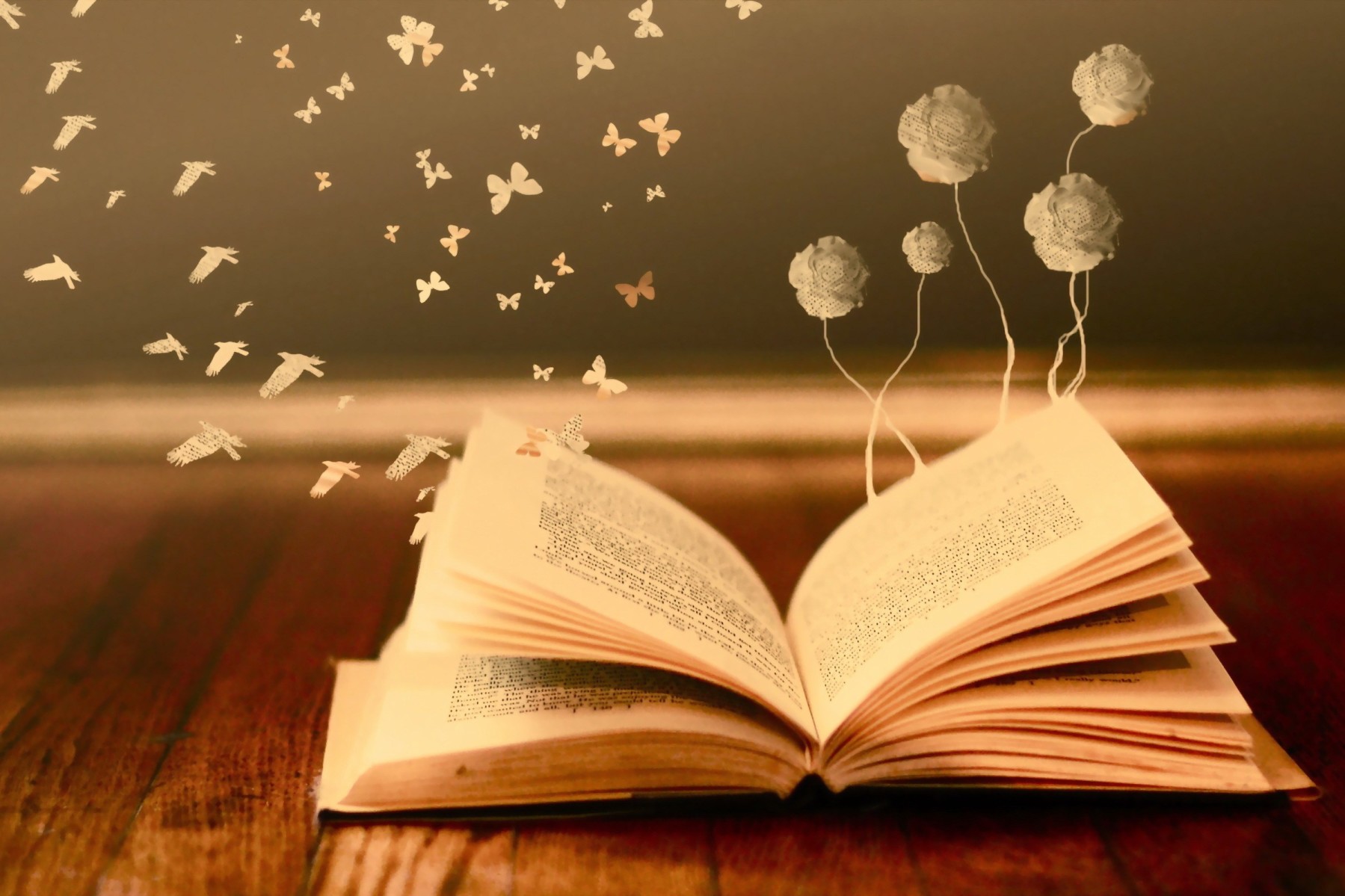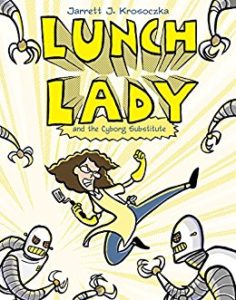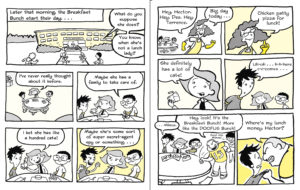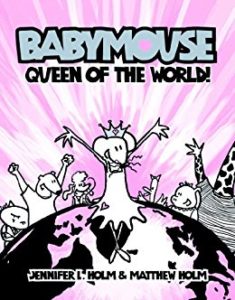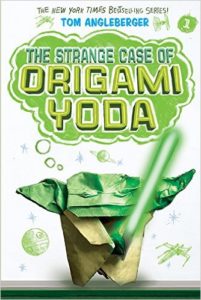Graphic novels are all the rage, particularly for middle and high school kids. But many folks don’t know that there are some really great graphic novels for younger kids, too. And getting younger kids hooked on these books can be a really good thing.
A graphic novel is basically a comic book, but the entire book is one story. The pages are often heavier and slicker than traditional books. These books feel good in your hands. Sounds weird, I know, but you’ll know what I’m talking about when you pick one up.
Due to the images and limited text, they can seem less intimidating to readers than dense, text-filled chapter books. It doesn’t take long to read pages that are mostly comprised of pictures. This can boost confidence and propel readers through the text. Graphic novels can help readers make the transition to more complex text because the text isn’t dumbed down at all. They feature literary elements such as metaphor, symbolism, etc. and advanced vocabulary just like a typical novel. The only difference is pictures help the reader make meaning of the text. One more bonus: ELL students can get a good understanding of the story even if reading the words is a challenge.
The problem is that many parents, teachers, and kids don’t know much about graphic novels, so kids are missing out on a genre of texts that could foster a love of reading.
Here, I introduce you to some gateway graphic novels for young readers. Start with these and watch them get hooked.
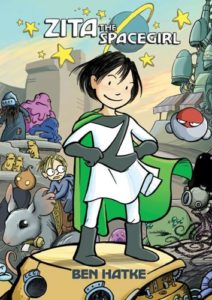 Babymouse, by Jennifer & Matthew Holm, is a great choice for 2nd grade readers because it’s easy to read and there are tons of books in this series, so when a reader finishes one, more are waiting in the wings. Readers can follow Babymouse’s adventures in pink, white, and black illustrations in titles such as Beach Babe and Rock Star. Zita the Spacegirl, by Ben Hatke, is another option. This series is about a girl who is sucked to the opposite end of the universe. I’ve found that girls seem to be more attracted to these two series, but that certainly isn’t a rule.
Babymouse, by Jennifer & Matthew Holm, is a great choice for 2nd grade readers because it’s easy to read and there are tons of books in this series, so when a reader finishes one, more are waiting in the wings. Readers can follow Babymouse’s adventures in pink, white, and black illustrations in titles such as Beach Babe and Rock Star. Zita the Spacegirl, by Ben Hatke, is another option. This series is about a girl who is sucked to the opposite end of the universe. I’ve found that girls seem to be more attracted to these two series, but that certainly isn’t a rule.
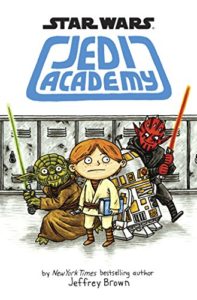 When parents and teachers ask me for a similar book that boys might like, I point them toward Jarrett J. Krosoczka’s Lunch Lady series. These books are about three kids and an undercover super hero who serves more than sloppy joes. If the reader likes Star Wars, I recommend Jeffrey Brown’s Jedi Academy series (Roan is a Luke-Skywalker-type protagonist invited by Yoda to attend Jedi Academy) or Tom Angleberger’s Origami Yoda series (Origami Yoda is a finger puppet oracle).
When parents and teachers ask me for a similar book that boys might like, I point them toward Jarrett J. Krosoczka’s Lunch Lady series. These books are about three kids and an undercover super hero who serves more than sloppy joes. If the reader likes Star Wars, I recommend Jeffrey Brown’s Jedi Academy series (Roan is a Luke-Skywalker-type protagonist invited by Yoda to attend Jedi Academy) or Tom Angleberger’s Origami Yoda series (Origami Yoda is a finger puppet oracle).
As kid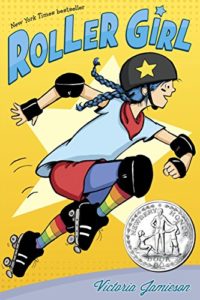 s get more comfortable with reading graphic novels, intr
s get more comfortable with reading graphic novels, intr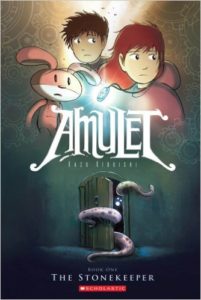 oduce them to books like the Babysitter’s Club series (Ann M. Martin and Raina Telgemeier), El Deafo (Cece Bell), Roller Girl (Victoria Jamieson), Ghosts (Raina Telgemeier), and the Amulet series (Kazu Kibuishi). Readers of all ages will enjoy these books.
oduce them to books like the Babysitter’s Club series (Ann M. Martin and Raina Telgemeier), El Deafo (Cece Bell), Roller Girl (Victoria Jamieson), Ghosts (Raina Telgemeier), and the Amulet series (Kazu Kibuishi). Readers of all ages will enjoy these books.
These titles will set kids up for a satisfying life of graphic novel consumption!
Want to know more? Check out these resources:
Graphic Novels Blog http://graphicnovelresources.blogspot.com/
Graphic Novels: Read the Pictures http://www.readingrockets.org/booklist/graphic-novels
Intro to Graphic Novels Video https://www.youtube.com/watch?v=wHVyUOHVmnE
Botzakis, S. (2010). A book by any other name? Graphic novels in education. ALAN Review, 37(3), 60–64. Retrieved from http://scholar.lib.vt.edu/ejournals/ALAN/v37n3/botzakis.html
Special thanks to children’s and YA lit expert Kelly Bahoric for her feedback on this article.
Associate Professor of Literacy Education & Lover of Children’s Books
swaggertye@ecu.edu
